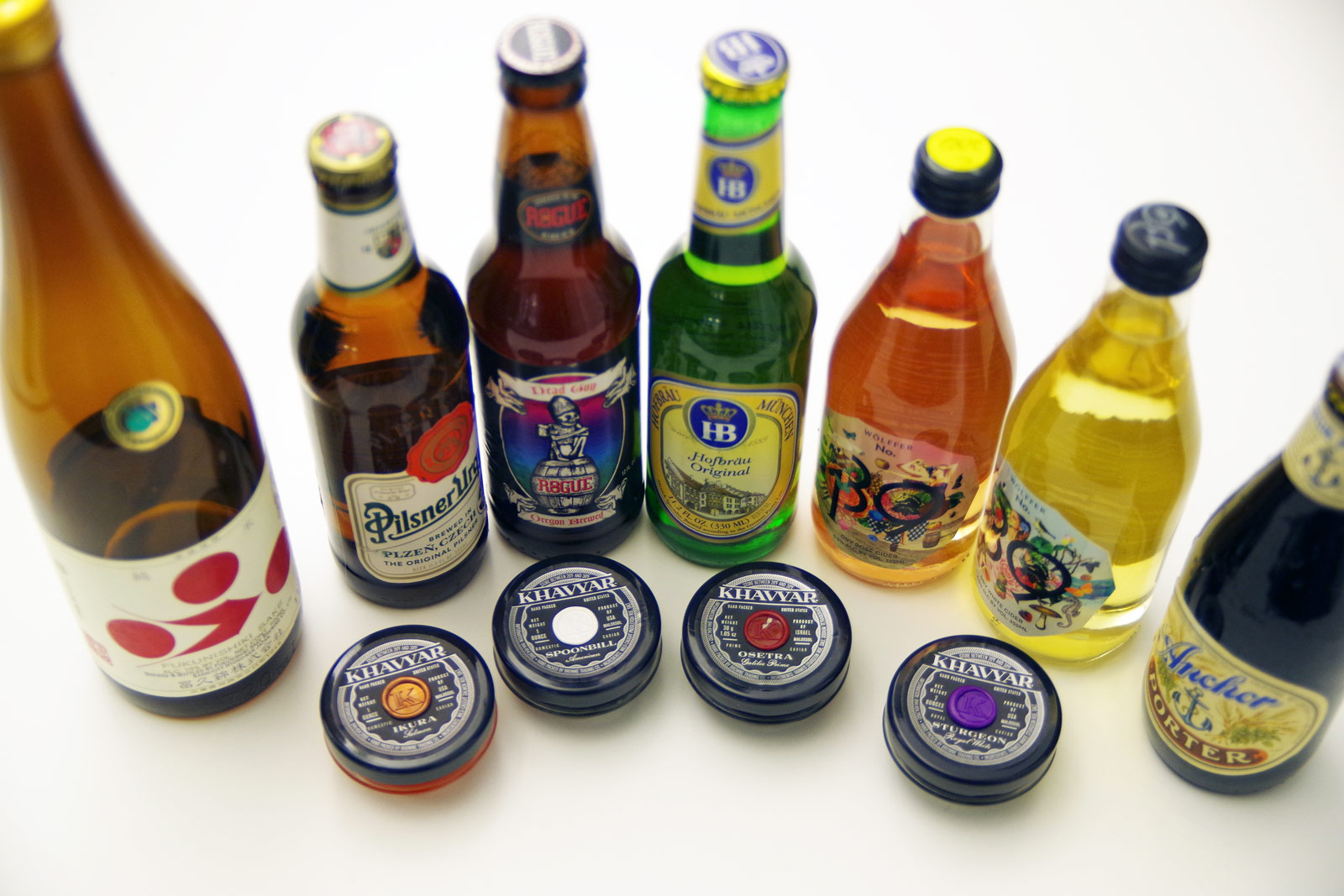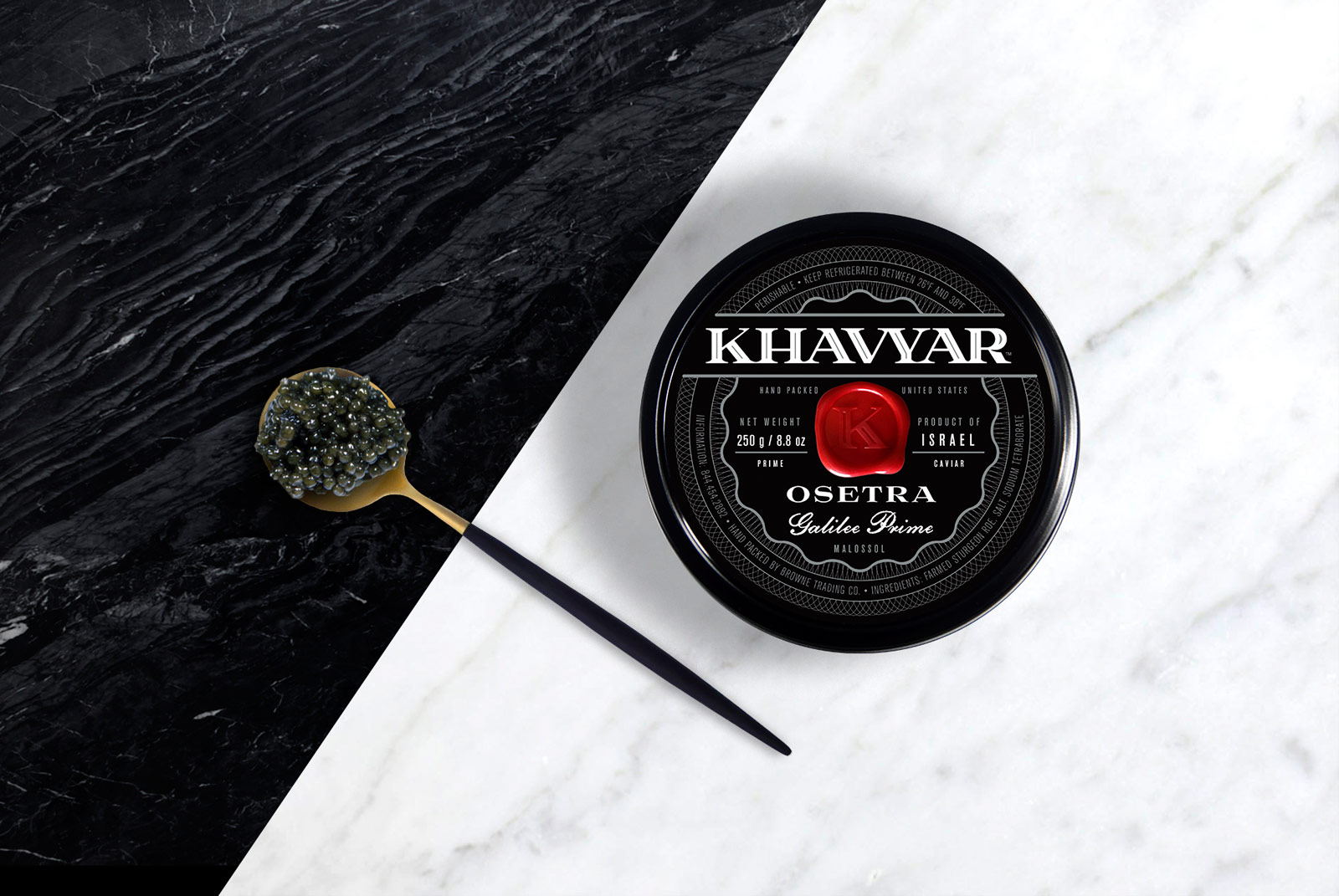Pairing Beer with Khavyar’s Unpretentious Caviar
A range of domestic and international products at various prices make for a great entry point


When we sat down with Andy Rosenthal, creative director of Khavyar—a recently launched caviar brand featuring an array of products, both domestic and international, wild and farmed—he shared an anecdote about caviar in the 1800s. At that time in America, caviar was so inexpensive and popular, it was served in bars the way peanuts are today. The US was the largest producer of caviar for some years, but after its decline, and all that remained was the concept of fancy caviar and champagne (or vodka, for that matter). Khavyar wants to be for everyone and, with respectable entry-level options and superior top tier products, the brand is attempting to shake up the image of caviar. We tried a handful of their products with Rosenthal, and paired them with various beers (plus a sake and two ciders) in an effort to learn a bit more.

Spoonbill caviar does not hail from sturgeon. It generally comes in larger pearl form, and there are tremendous variations in flavor depending on the source region. “We offer a few spoonbills, one of which, a wild caught American, from the south-south east, replicates traditional osetra caviar,” Rosenthal explains, “We are going to pair that with a hefeweizen. A light beer, even a pilsner, accents the lighter taste of this caviar.” Together, the first spoonbill ($45 an ounce) and hefeweizen make for a gentle yet flavorful experience.

Spoonbills are commonly used to serve larger groups, because of their lower cost but reliability. The second spoonbill we tried, from Idaho ($99 an ounce), is their best seller in America. “It’s very clean, so there’s not a lot of aftertaste. It pairs best with an amber beer,” says Rosenthal. The texture here is softer and the flavor is creamier, a nice accent to the amber. As one may expect, there’s more flavor to this iteration, but it’s crisp on the finish.
Our personal favorite was a sturgeon hybrid caviar from Belgium ($115 an ounce). “It’s a Russian osetra female egg, fertilized by a Siberian male egg. It’s nuttier and buttery,” Rosenthal adds. While it’s more powerful than the previous iterations, it’s not overwhelming. There’s an oiliness to the texture. The light sweetness, imparted from the Siberian heritage, pairs well with a pilsner. The distinctness of the flavor here, which also references classic caviars we’ve consumed, made it a valuable blend of tradition and innovation. With the pilsner, it became altogether refreshing.

The last sturgeon we tried ($125 an ounce) comes from an Israeli kibbutz right beside Galilee. “It’s aquaculture. Water from a snowcap atop Mount Herman runs into their system, adjacent to the town of Galilee—it’s a sustainable, free-flowing system.” This is the most classic taste profile in the mix. “We serve this with a porter because of the strength of the caviar,” says Rosenthal. The two hold their own against one another, resulting in a fun and unexpected interaction.

Stepping away from sturgeon, we gave Khavyar’s vibrant orange salmon eggs (only $15 an ounce) a try, all of which are wild caught and domestically sourced from Alaska. “It’s exactly what you think it is. A very direct experience, but the texture is rich and it tastes fresh,” Rosenthal notes. Here, we diverged from beer and sipped sake. “It’s a good stand-in for champagne. A light sake, a mellow one, offers a different take on that experience. It pairs well with the salmon. It’s like referencing a sushi and sake combination. The salmon also pairs well with cider,” Rosenthal explains, so we also tried it with two of Wölffer Estate Vineyard‘s latest. The sweetness of both alcohols lend themselves nicely to the salmon’s boldness. This was the least pricey experience of them all and, without much doubt, the most fun.
Explore all of Khavyar‘s caviar offerings online, where prices start at $12 an ounce.
First two images by Cool Hunting, all others courtesy of Khavyar












